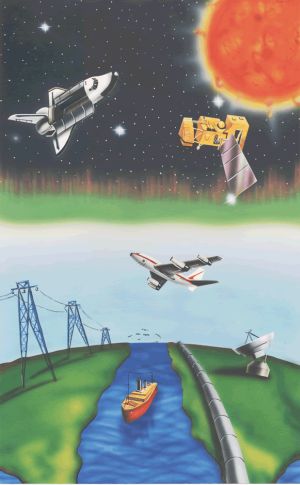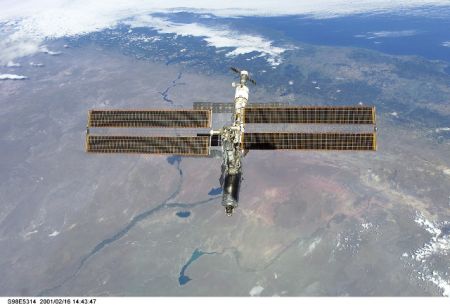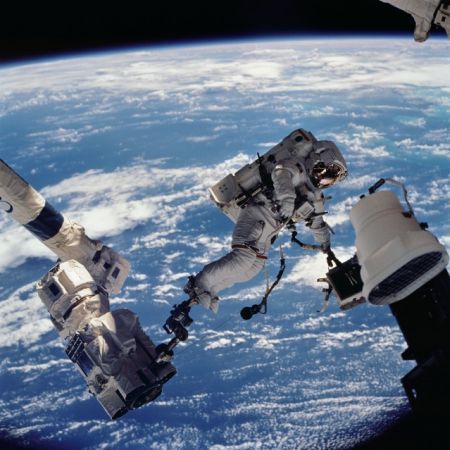Effects of Space Weather
Effects of Space Weather
HUNG Fan-yiu
December 2004
Space weather (see Introduction) can cause a wide range of effects on human activities. Some are discussed below.

Common effects of space weather(Source/Credits: Space Environment Center, Boulder, CO, National Oceanic and Atmospheric Administration, US Dept. of Commerce)
Effects on Satellites and Spacecraft
Satellites and spacecraft are vulnerable to space weather.
Increased radiation from the Sun and occurrence of geomagnetic storms (i.e. severe distortion of geomagnetic field of the Earth) may cause disturbances such as increases in density in the Earth's upper atmosphere. These result in a greater drag on the movement of satellites and spacecraft, causing a slow-down or even a change in orbit. Their useful life may also be reduced. Operators of these facilities are highly concerned because of these high operation and maintenance costs.
Charged particles from the Sun may strike the spacecraft and satellites and make direct physical damage to the equipment. Also, charge accumulation may occur on the electronics on board satellites and spacecraft, resulting in a build-up of the electric field. When an electrical discharge eventually happens, the electronics may be damaged, hence affecting the operation of the satellites and spacecraft.
In May of 1998, intense electron fluxes were released from the Sun. During that time, an American communication satellite, Galaxy-4, failed, leading to the suspension of paging service for 45 million people. It was believed that electrical discharge between electronic components onboard the satellite was the main cause of the failure.

The operation of spacecraft can be affected by violent space weather.(Source/Credits: National Aeronautics and Space Administration)
Effects on human body
The intense radiation from violent space weather can affect human DNA or cell replications. Astronauts in space, if not properly protected from the dangerous radiation, may be adversely affected. Flight at high altitudes may also result in a higher dose of radiation at the height of solar activity.

Astronauts working in space have protective clothing against radiation.(Source/Credits: National Aeronautics and Space Administration)
Effects on Communication and Navigation Systems
To enable long-distance communication, many telecommunication systems transmit radio signals via the ionosphere. Electromagnetic waves produced by solar flares may disturb the ionosphere and interfere with radio signals, resulting in degraded communication quality.
Maritime and aviation navigation systems use low frequency signals to locate vessels or aircraft. Intense solar activity may generate inaccuracy in information in these systems, causing errors in the positioning of vehicles.
Effects on Electric Power and Pipelines
Occurrence of geomagnetic storms (i.e. severe distortion of geomagnetic field of the Earth) can induce electric current in oil pipelines and electric cables. Flow meters may be affected, giving incorrect reading. The rate of corrosion of pipeline may also increase. The abnormal current induced in power grids may damage transformers because of overheating. During the great geomagnetic storm in 1989, transformer failures resulted in electricity suspension in Quebec for 9 hours.